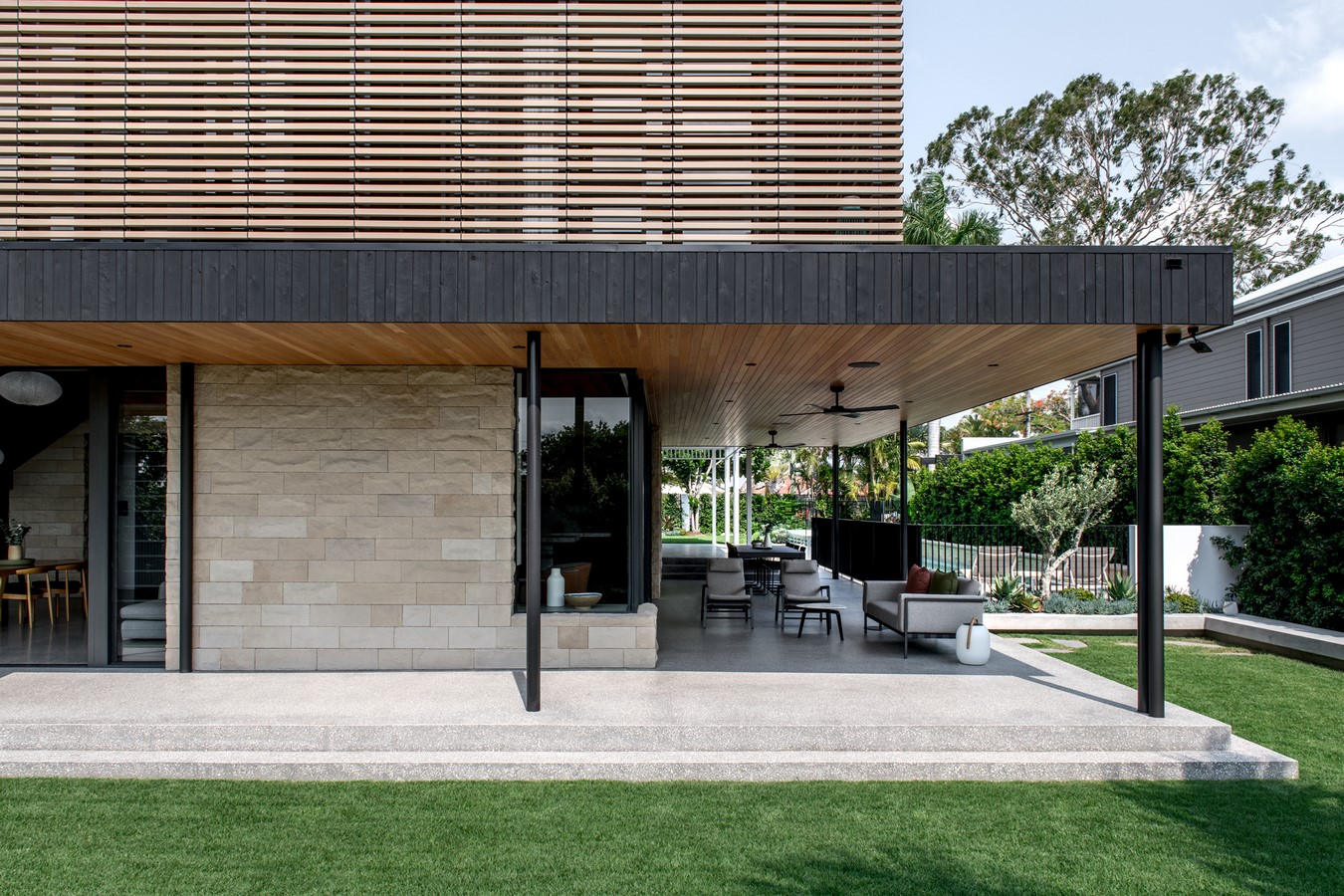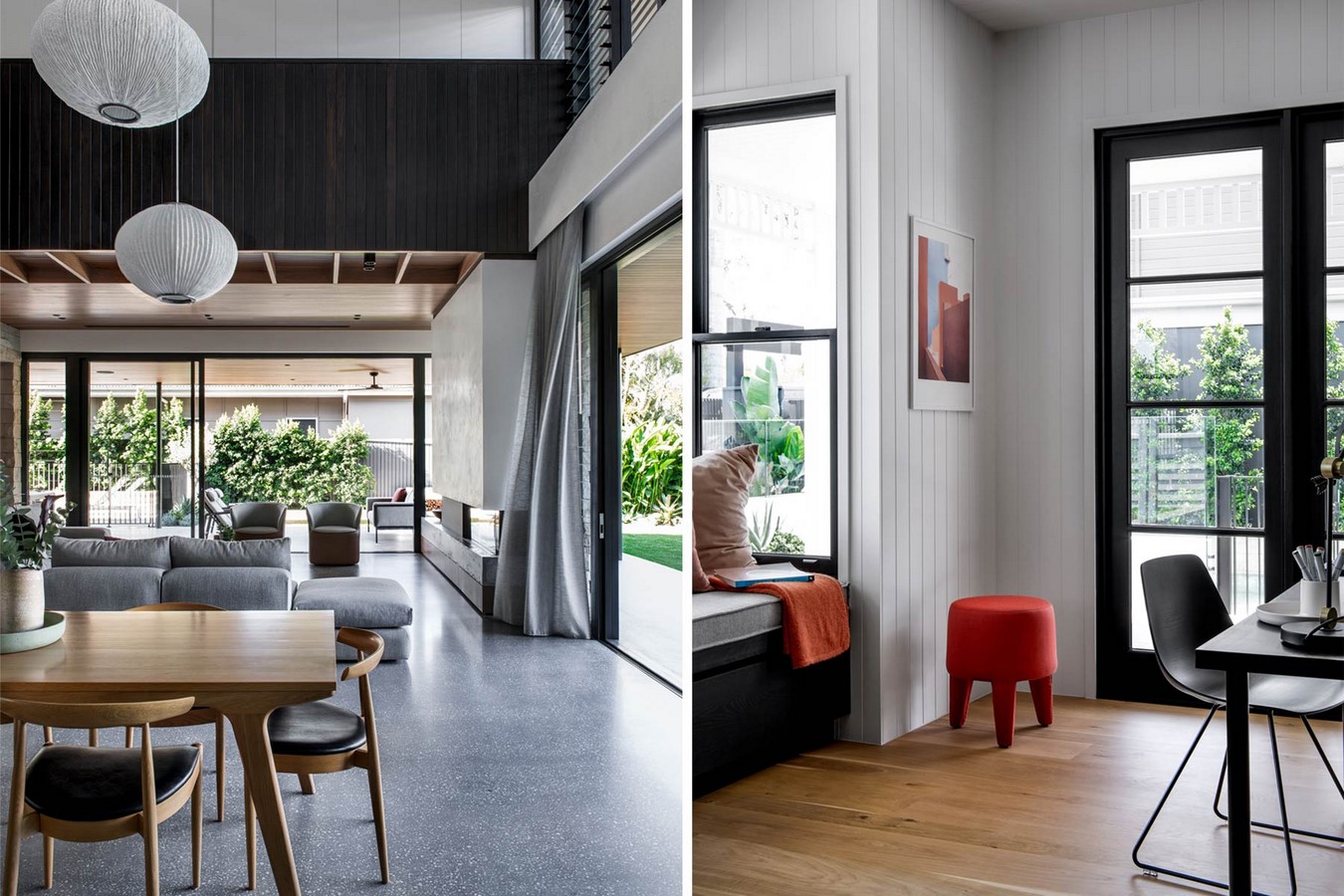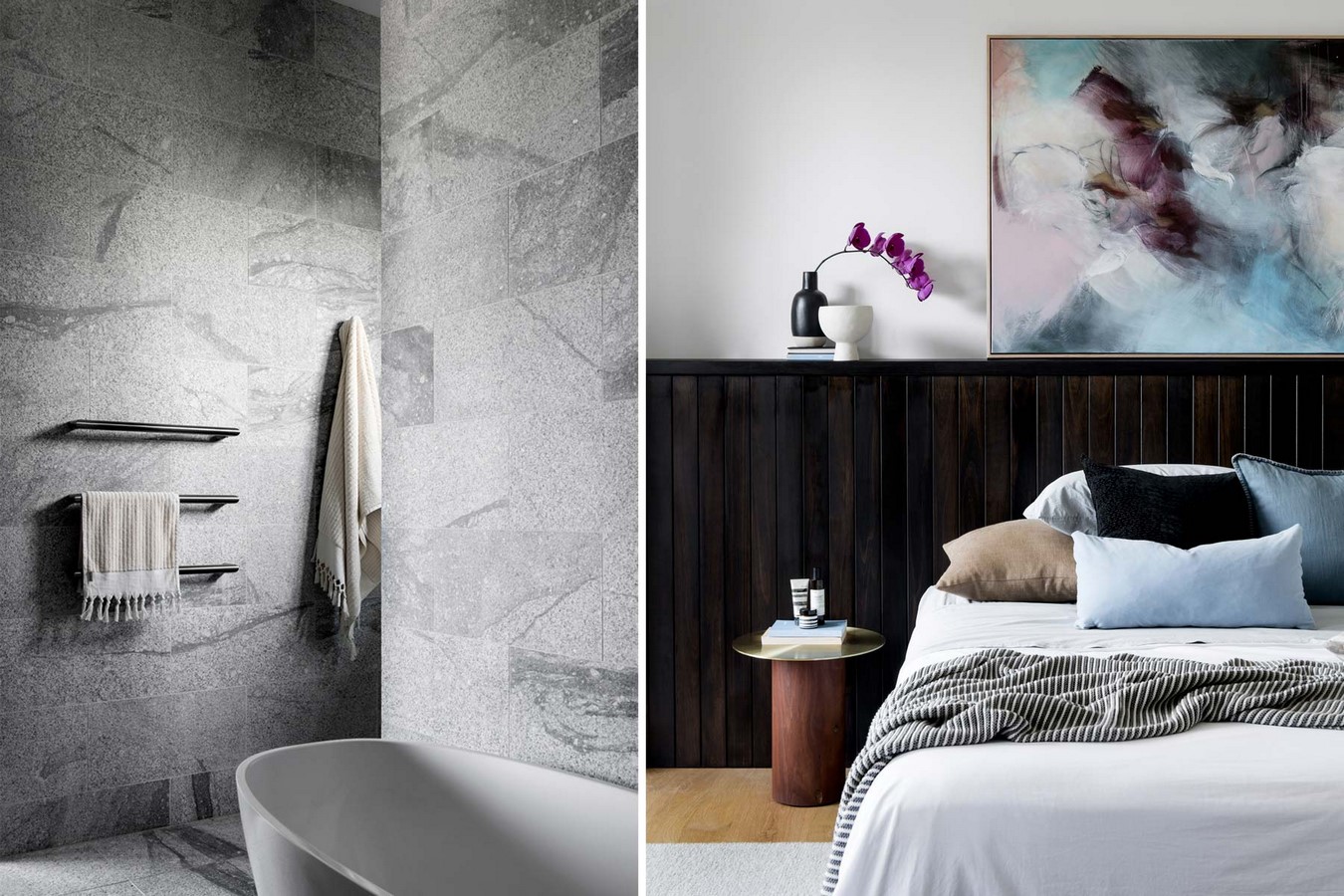Avonleigh House represents a recent substantial expansion and restoration project carried out on a majestic pre-1942 Queenslander property known as ‘Avonleigh.’ This original Queenslander residence showcases classic architectural features of the era, such as expansive front and side verandas, intricate timber embellishments, authentic VJ linings, and high pressed metal ceilings. Preserving these cherished heritage elements was a top priority throughout the project.
Project Name: Avonleigh Queenslander
Studio Name: Kelder Architects

Situated in the inner-city Brisbane suburb of Hawthorne, the house occupies a 1012 square-meter flat plot, approximately 6 kilometers from the city center. Hawthorne is renowned for its wide, character-rich streets adorned with numerous traditional Queenslanders of grand design.
From the project’s inception, a deliberate choice was made to clearly distinguish the new construction from the existing structure. This clear separation ensures that the identity and historical significance of the original home are maintained.

Taking into account the site’s orientation and the most favourable aspects, the new additions were designed to introduce natural light and ventilation into the house. The focus was on maximizing the potential of a lengthy section of the property, which faces north and extends to the side boundary. The design revolves around a spacious north-facing pool terrace, flanked by landscape buffers along the fence line and an east-facing grassy courtyard. Raised covered terraces connect the primary living areas to these prominent outdoor spaces.
At the front of the property, the original Queenslander was elevated and meticulously restored, preserving all of its heritage characteristics. The new lower level of the Queenslander adheres to the original footprint, extending the verandas to the lower levels and incorporating an entryway, study, and covered parking beneath the original structure. The extended veranda now encircles the new entryway, marked by a timber colonnade and adorned with delicate timber fretwork.
The rear extension of the house distinguishes itself through its choice of materials. Extensive use of sandstone, both on the exterior and interior, firmly supports the elevated original Queenslander. The veranda has been reimagined in a contemporary style, forming elevated, covered terraces with durable polished concrete floors. These shaded terraces provide spacious outdoor living areas, seamlessly connected to the northern pool terrace and the eastern side of the newly created north/east-facing grassy courtyard. Expansive glass sliding doors open up to create a fluid transition between indoor and outdoor spaces.

The new extension is characterized by a horizontally proportioned terracotta baguette batten screen that rests atop the shou sugi ban clad terrace edges and the textured sandstone base. This screen filters the early morning eastern light, infusing the large internal double-height void with natural illumination and connecting the old and new sections of the house.
Designed for a family that embraces outdoor activities and entertainment with their children, extended family, friends, and pets, the house’s central hub revolves around the kitchen, dining, and family rooms. These key spaces are united within a grand, open-plan double-height room, serving as the heart of the home. This grand room acts as the central focal point of the entire house, bridging the upper-level living and bedroom areas with the lower indoor and outdoor living spaces, epitomizing the essence of life within the house.





















